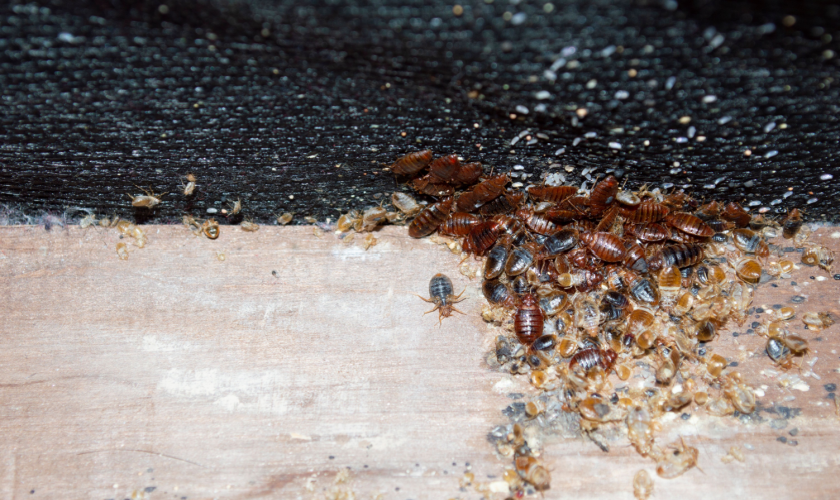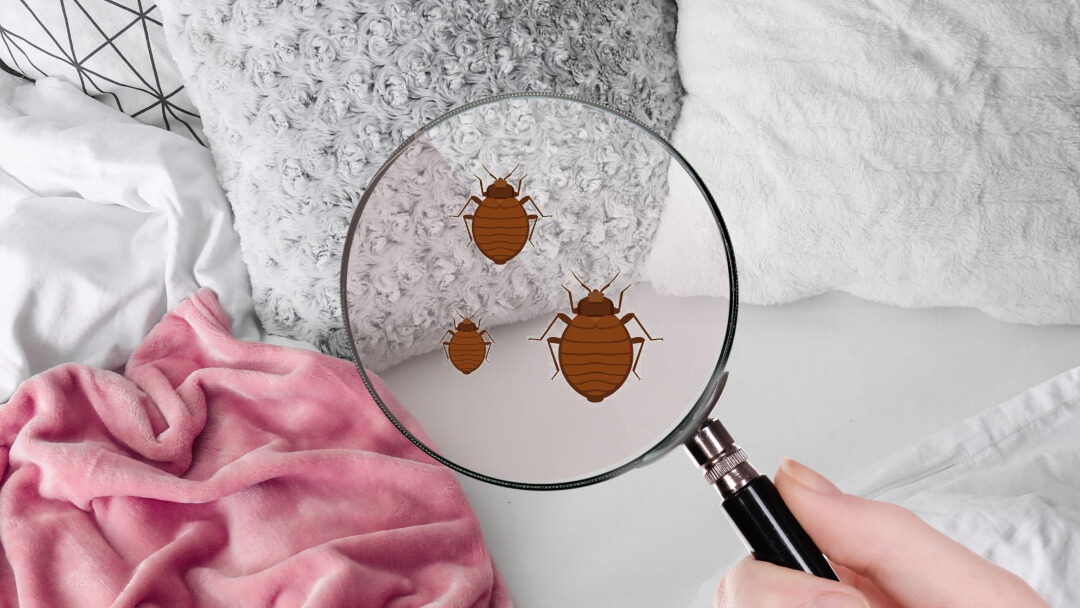Get Informed Regarding the Kinds of Pest Control Methods and Their Benefits for Property Owners
Comprehending the different insect control techniques readily available to home owners is essential for reliable bug monitoring. Home owners who are well-informed can make strategic options that not only address pest issues yet also enhance the total quality of their living setting.
Chemical Pest Control Techniques
Chemical parasite control methods are a critical element of integrated pest management approaches for house owners seeking reliable remedies to pest invasions. These approaches include the application of chemical substances created to eliminate or prevent parasites that threaten personal building, health, and convenience. Typical chemicals utilized include insecticides, fungicides, rodenticides, and herbicides, each customized to target details bugs.
The key benefit of chemical parasite control is its quick efficiency; several formulations supply immediate results, decreasing pest populations significantly quickly. Additionally, advances in chemical solutions have led to items that are a lot more eco-friendly and have lower poisoning degrees for non-target organisms when applied correctly.

Organic Parasite Control Techniques
Natural bug control approaches have acquired importance as homeowners look for much safer and more lasting alternatives to conventional chemical techniques. Biological bug control techniques use all-natural predators, bloodsuckers, or pathogens to take care of pest populations effectively. This method is not just eco-friendly but also reduces the danger of damage to non-target types, consisting of advantageous insects and wildlife.
One of the most typical biological control approaches involves presenting all-natural killers into the setting. For instance, ladybugs can be utilized to regulate aphid populaces, while nematodes target soil-dwelling pests like grubs. Furthermore, parasitoids-- microorganisms that live on or within a host-- can be utilized to regulate specific insect varieties by laying eggs inside them, eventually leading to their demise.
One more approach is making use of biopesticides, which are stemmed from all-natural materials such as plants, minerals, or microorganisms (bed bug exterminator). These products can properly target bugs while posing marginal threat to pet dogs and humans. In general, organic parasite control methods provide property owners with an efficient methods of bug administration that lines up with environmental principles, promoting a healthier living environment while minimizing reliance on artificial chemicals
Mechanical Pest Control Methods
Mechanical bug control approaches incorporate a selection of approaches that literally prevent or get rid of insects without making use of chemicals. These techniques are specifically helpful for home owners seeking eco-friendly choices while making certain the safety of their living areas.
One common approach is the use of barriers, such as traps, screens, and internet, which avoid insects from entering homes or certain areas. Setting up home window displays can efficiently maintain pests out, while utilizing physical barriers around yards can prevent bigger insects like deer or rabbits. Additionally, mechanical catches created for rodents can capture and get rid of these insects without the demand for poisonous substances.
An additional reliable approach entails making use of mops and vacuum cleaners to eliminate pests straight from surfaces. Routine cleaning and upkeep can considerably decrease parasite populaces by eliminating food sources and hiding areas. Moreover, using devices like ultrasonic pest repellents can hinder different bugs with acoustic wave that are unpleasant to them yet inaudible to humans.
Social Insect Control Practices
Cultural pest control practices concentrate on modifying the environment and monitoring methods to create problems that are much less for pest infestations. These practices are basic in keeping a balanced environment and reducing the dependence on chemical interventions. By modifying farming methods, house owners can properly deter insects while promoting plant health.
One common technique includes crop rotation, which disrupts the life cycles of pests by transforming the kinds of plants grown in a specific location (bed bug exterminator). This not only decreases pest populaces but also boosts soil health. Furthermore, intercropping-- planting varied plants in proximity-- can confuse bugs and minimize their capability to locate their preferred host plants
Water administration is another crucial element of social practices. Proper watering techniques can prevent standing water, which acts as a breeding place for insects and various other insects. Additionally, keeping cleanliness around the home, such navigate to these guys as consistently getting rid of particles and food waste, can dramatically minimize pest attraction.
Integrating these social techniques into a detailed parasite management strategy permits home owners to create a setting that normally hinders pests, thus boosting the effectiveness of various other control techniques while promoting lasting horticulture and landscaping.

Integrated Bug Monitoring Approaches
Integrated Parasite Management (IPM) stands for a holistic technique that integrates various approaches to efficiently handle insect populations while decreasing ecological effect. This technique incorporates biological, cultural, physical, and chemical techniques to attain lasting bug control. By assessing pest populations and their natural adversaries, IPM stresses monitoring and identifying insects prior to implementing control actions.
Among the core principles index of IPM is the use of limits, which establish the level of parasite task that calls for treatment. This makes certain that therapies are applied only when essential, reducing the dependence on chemical pesticides. Biological control techniques, such as presenting natural predators or bloodsuckers, work in conjunction with social techniques like plant rotation and environment control to interfere with pest life process.
Furthermore, IPM motivates the usage of least-toxic chemical options when treatment is required, focusing on products that pose very little threat to non-target organisms and the environment. For house owners, taking on IPM approaches not only enhances the efficacy of bug administration but additionally advertises a healthier living setting, promoting biodiversity and lowering chemical direct exposure. Ultimately, IPM equips home owners to make enlightened choices that balance pest control with ecological duty.
Final Thought
In verdict, comprehending the different insect control techniques equips house owners to make educated decisions concerning pest management. Each method-- chemical, organic, mechanical, cultural, and integrated pest monitoring-- uses unique benefits that provide to various requirements and choices.
Comprehending the different insect control methods available to property owners is vital for reliable bug management.Chemical pest control techniques are an important element of incorporated parasite administration strategies for homeowners seeking effective options to pest problems. In general, organic parasite control strategies supply property owners with an effective ways of bug administration that straightens with eco-friendly principles, advertising a much healthier living atmosphere while decreasing reliance on synthetic chemicals.
Social bug control pest control specialists techniques concentrate on changing the environment and monitoring strategies to produce conditions that are less favorable to pest infestations.In conclusion, comprehending the different pest control methods encourages property owners to make educated decisions concerning pest management.